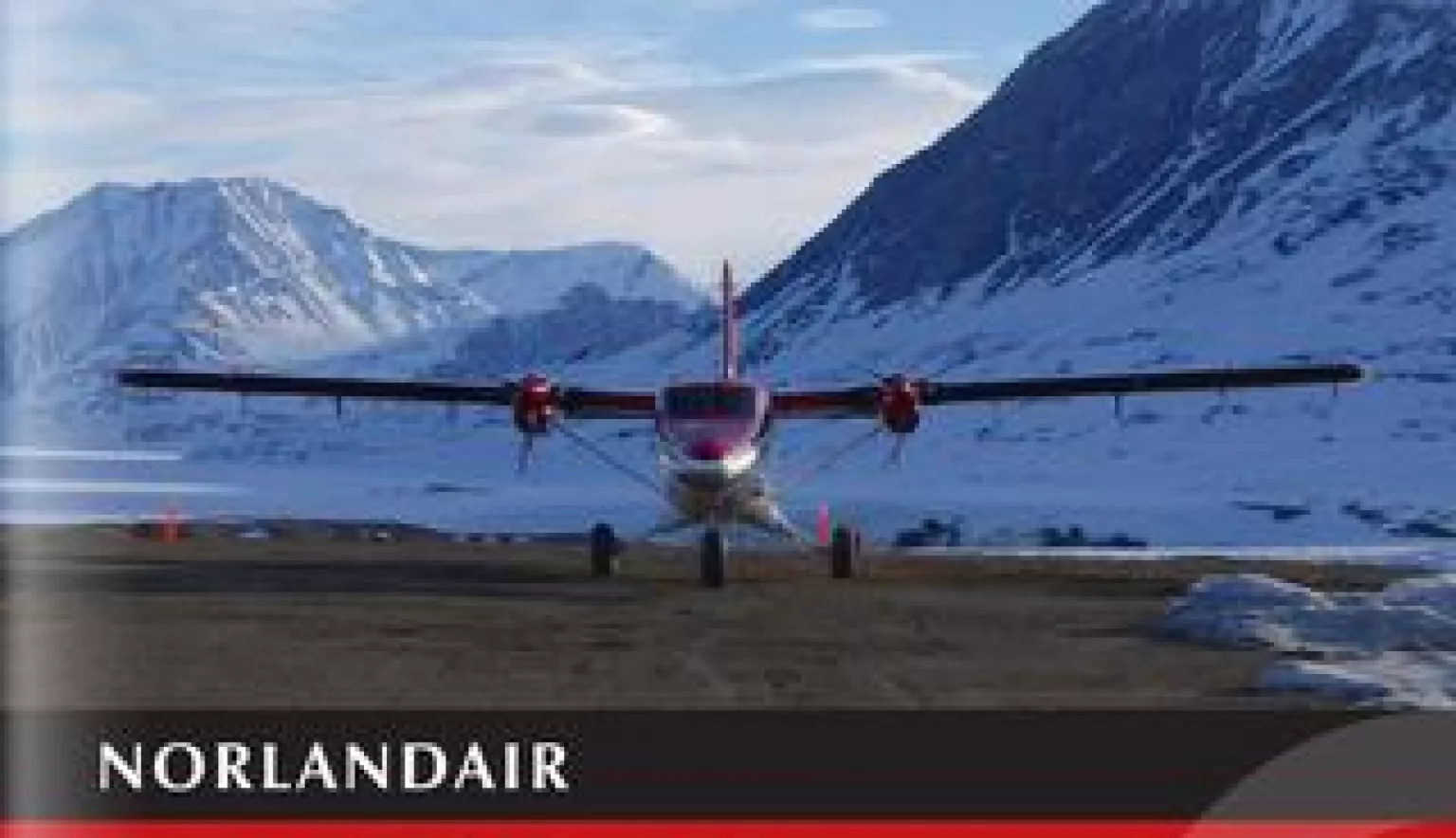Retaining its focus on air charters to Greenland and continually identifying additional services that add value to the customer experience, Norlandair has witnessed organic growth since its founding in 2008, when it acquired the Twin Otter flight operation of Air Iceland.
TAKING ON THE ARCTIC
Tracing its roots back to a company with the same name which was founded in the mid-1970s, Norlandair operates across East Greenland and Iceland, providing chartering services in the challenging climate of the Arctic.
“An operator in East Greenland is required to operate on skis and big flotation tiers as the landing areas are very often unprepared landing strips or on the glacier,” explains Fridrik ‘Frissi’ Adolfsson , Chief Executive Officer of Norlandair. “We operate in a very niche market, which means any competition we might face is on a global level, rather than a local one; with operators coming from areas such as Canada, where the climate presents additional aviation challenges.”
Advantageously, Norlandair’s positioning at Akureyri Airport in Iceland will help the Company to capitalise on the increasing tourism in the area, while also expanding its bouquet of logistics services to include the procurement of goods, offering storage facilities, search and rescue, and med-evac flights.
Leveraging the versatility of its three, 19-seat Twin Otter aircrafts, the Company is able to offer scheduled and specialised charter air services across three domestic routes and one international, in close cooperation with Air Iceland. Additionally, Norlandair operates two GA8 Airvan aircrafts which are mainly used for sightseeing, and a seven (luxury seats) or nine-seater (commuter seats) B200 Beechcraft Super King rounds-off the current fleet offering; designed to support Norlandair’s latest business segment as an ambulance charter.
“Throughout the years, we have accumulated expertise in operating the Twin Otter on the East Coast of Greenland in extreme conditions. This operating environment is reflected in our training of the staff and in particular the pilots. It takes years to acquire these operational skills, and this makes Norlandair the obvious choice for fixed-wing aircraft transportation in the area,” Adolfsson says.
CONTINUAL GROWTH
Closely following the latest industry trends and activities in Greenland – with one eye on the wider turboprop market in Northern Europe – Norlandair has a strategy to continuously match the right opportunities with its fleet of aircraft, with the hopes this will lead to further organic growth and the subsequent purchase or lease of additional aircraft types.
“In addition to our focus on Greenland, we are also on the lookout for opportunities for our King Air ambulance services and general charter in Northern Europe. The Arctic charter and ambulance service will help us in particular to participate in the ongoing discussion on search and rescue. As the number of crew ships have multiplied in the Arctic waters, then understandably there must be capabilities to perform search and rescue and I believe that Norlandair can be a valuable partner in that area in the years to come,” Adolfsson emphasises.
Meanwhile, the Company is making the necessary capital investments in its fleet maintenance as a crucial part of its continuous improvement strategy. “Over the past few years, we have been upgrading our engines from PTA6-27s to PTA6-34s to not only make sure that we maintain our safety track-record, but to improve operational performance, especially on higher ground,” he details. “Moreover, we are aware that we are operating in a delicate Arctic environment and take all precautions available to us to limit our environmental impact. This ethos also rings true in our daily administrative tasks on the ground, where we have increased recycling and waste management in our offices in cooperation with other companies that work at Akureyri Airport.”
Working for Norlandair has its fair share of excitement which Adolfsson says is another core facet of the business’ prosperity. “Being a small Company means that staff have to be trained to fulfil various duties across different operational areas. This has provided our workforce with a bird’s-eye view of our Company culture and deeper understanding of our core values,” he comments.
By creating a family-like atmosphere, Norlandair’s skilled pilots and support staff can share the success that the Company has enjoyed over the past eight years.
LAYING THE GROUNDWORK
Over the next three-five years, Norlandair plans to closely monitor interest in its increasing array of chartered and value-add services in order to make the best expansion decisions to keep the business on the path to sustainable organic growth. This objective is aligned with the planning and construction of a new hangar and office facility at the Airport; which will be supported once again by its on-site maintenance facility, an aspect that is outsourced to Arctic Maintenance, a PART 145-accredited facility.
“Presently, we are considering our options and will invest in further aircraft when the time is right. In the shorter-term, our focus for the coming year is to increase our revenues by gaining more work on the shoulder seasons; March-May, and September-October. If we are successful in that endeavour, then this will lay the groundwork for increasing our fleet of aircrafts and/or adding a new larger type of aircraft,” Adolfsson concludes.



















